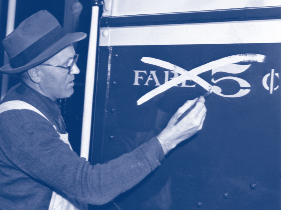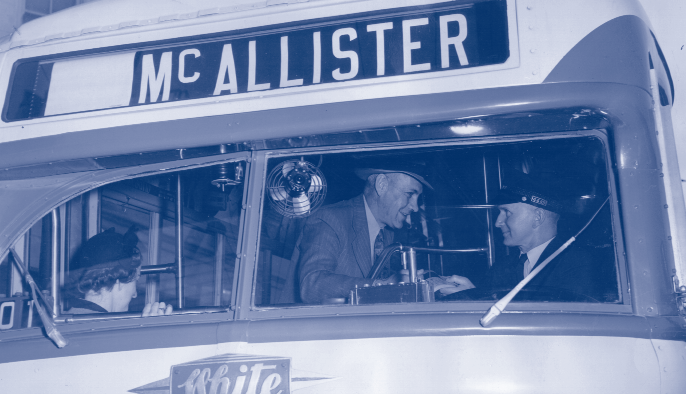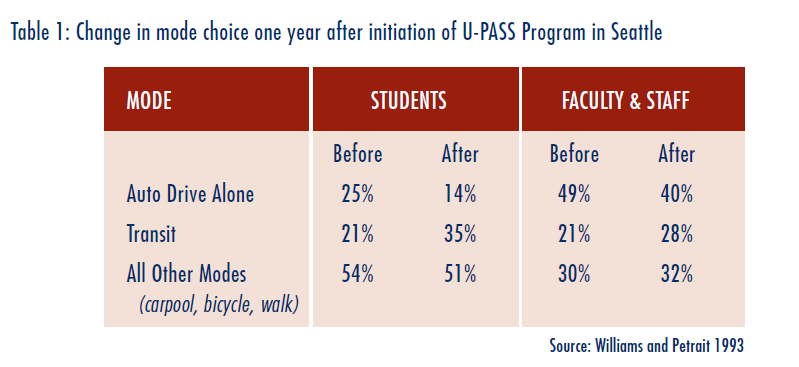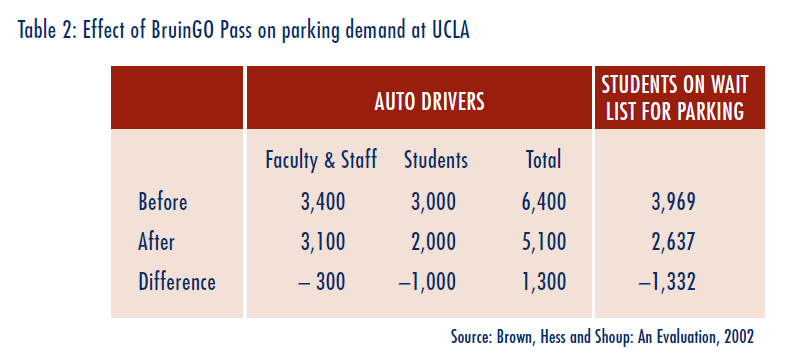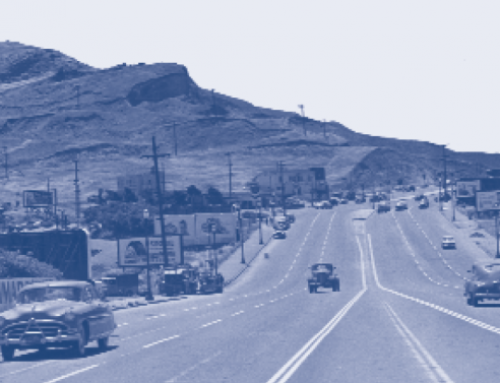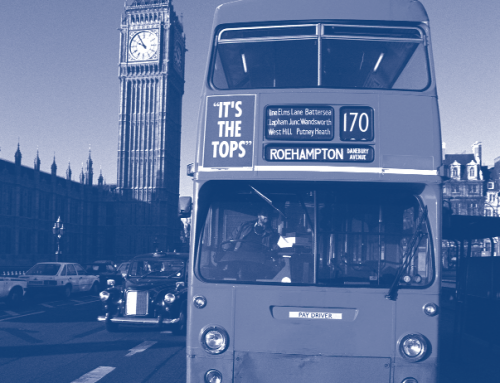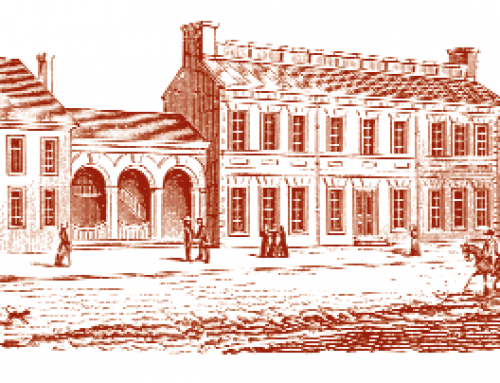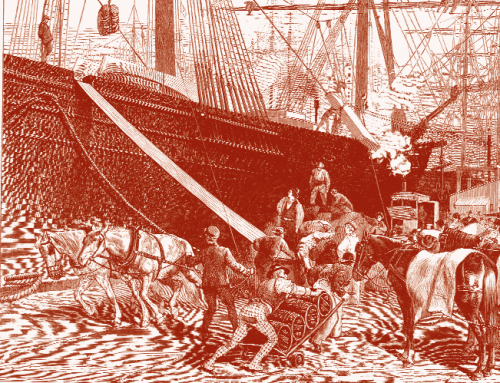Public transit operators in the United States have long known that fare hikes do not increase total revenues. Although while fare reductions might boost ridership, they can also reduce total revenues and thus increase reliance on subsidies. Transit operators trying to balance their budgets need new strategies that can produce more revenue than costs. Some transit agencies have tried selling steeply discounted unlimited-ride transit passes to groups, such as students at a university or employees at a large company. Such deep-discount group-pass programs are paid for either by participants through payroll deductions or school fees, by an employer or school, or by some combination of both. Most existing programs are either employer-based or campus-based. A few neighborhood-based passes are issued through neighborhood associations. Programs typically include: (a) universal coverage of members of an identified group, (b) unlimited rides by group members within a specified period, and (c) deep discounts of from forty to ninety percent of regular pass prices. Some programs also include guaranteed rides home.
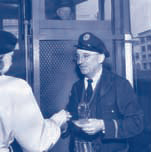 The paradox of a net increase in revenue from a deep discount is comparable to the workings of group insurance plans. An insurance company that insures properties against theft does not care whose property is stolen; its concern is that total premiums will cover the total cost of replacing any stolen property. The insurance company is thus an intermediary that organizes risk-sharing pools while incurring transaction costs. As the pool gets larger, the risk cost and often the transaction costs become smaller, and premiums lessen.
The paradox of a net increase in revenue from a deep discount is comparable to the workings of group insurance plans. An insurance company that insures properties against theft does not care whose property is stolen; its concern is that total premiums will cover the total cost of replacing any stolen property. The insurance company is thus an intermediary that organizes risk-sharing pools while incurring transaction costs. As the pool gets larger, the risk cost and often the transaction costs become smaller, and premiums lessen.
Similarly, it does not matter to a transit agency offering a deep-discount group pass which members of a group use its services. The group pass covers a large number of people and is paid for the whole year in advance, whether the service is used or not. The agency is concerned only that total group revenue covers the total cost of providing the service. It may be viewed therefore as a facilitator, promoting the pool through deep discounts and incurring transaction costs. As the number of participants increases, unit costs decrease and the price per participant lessens.
While an unlimited-ride transit pass at a deep discount has 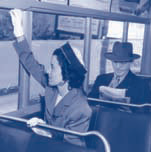 obvious appeal to those who receive it, there are also benefits to those who pay for it. In some cases, of course, the two are the same, although the organizing body, be it employer or university, frequently pays part or all of the cost. Why would it? There are possible environmental benefits if traffic is reduced because more people ride transit, and a program may relieve an acute parking shortage while helping to expand the geographic extent of affordable or attractive housing for employees and students. Group passes can also serve as inexpensive employee benefits. All these motivations in combination can contribute to the attractiveness of a university or employer to potential students or employees.
obvious appeal to those who receive it, there are also benefits to those who pay for it. In some cases, of course, the two are the same, although the organizing body, be it employer or university, frequently pays part or all of the cost. Why would it? There are possible environmental benefits if traffic is reduced because more people ride transit, and a program may relieve an acute parking shortage while helping to expand the geographic extent of affordable or attractive housing for employees and students. Group passes can also serve as inexpensive employee benefits. All these motivations in combination can contribute to the attractiveness of a university or employer to potential students or employees.
Increasing Transit Operating Venues
Case studies of deep-discount group-pass programs consistently reveal either higher revenues per boarding than the systemwide average or higher total revenues from target markets with the program than without it. The following three cases illustrate.
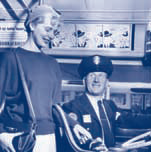 UC Berkeley (UCB) Student Class Pass Program
UC Berkeley (UCB) Student Class Pass Program
A 1997 survey revealed that 5.6 percent of UCB students used AC Transit before implementation of the Class Pass, approximately 1,690 students. Although not all these students rode AC Transit every day and so would not have purchased a monthly pass, assume for simplicity that they all did. The maximum revenue AC Transit would have earned from the UCB student-rider market would therefore have been $84,500 per month in those months that school was in session.
A survey in 2000 revealed that after implementation of the Class Pass, 14.1 percent of UCB students, or approximately 4,410 students, used AC Transit. The agency had negotiated an annual payment from the University of $1,251,000 to cover the entire enrolled student population. Assuming a ten-month academic calendar year, the monthly revenue to AC Transit was $125,100.
Net additional revenue was $40,600 per month, more than $406,000 per year, and approximately fifty percent above the pre-Class Pass level. Student ridership and revenue both increased, even though AC Transit made no changes in service to accommodate the student population and thus did not incur additional costs.
City of Berkeley ECO Pass Program
Approximately 120 employees commuted to work by AC Transit before the ECO Pass program. Some rode infrequently (one to ten times per month), some rode occasionally (eleven to twenty times), and some rode almost every day. If infrequent riders purchased an average number of rides and regular riders purchased the monthly pass, the estimated revenue from city employees before the program would be approximately
$2,410 a month. For the ECO Pass program, the city paid AC Transit $6,650 (for 1,330 city employees at $5 each) for each month. This translated to a revenue increase of $4,240 a month, approximately 175 percent more than without the program. This estimate is consistent with revenue-per-boarding data, calculated by tracing actual use of magnetic-card passes indicating a yield of three times the systemwide average from all fares. Therefore, AC Transit realized a net annual revenue increase of approximately $50,880 from the program. In this case also AC Transit made no changes in service to accom- modate the employee population and thus did not incur additional costs. Instead, it increased efficiency by filling unused capacity on its buses.
Denver Regional Transportation District (RTD) ECO Pass Programs
Every deep-discount group-pass program offered by the RTD yielded more revenue per boarding than the systemwide average from all fares. Together, three major pass programs yielded almost two times as much net revenue as the systemwide average in the year 2000. Among the various programs, the employment-based program generally yielded the highest revenue per boarding, suggesting that wide deployment of deep- discount group-pass programs might increase transit operating revenues. The more revenue transit agencies earn from various fare instruments, the less they need rely on government subsidies.
Increasing Transit Ridership
Reviews of deep-discount programs reveal successes across the board in boosting transit ridership. At UC Berkeley, student ridership increased approximately 160 percent after the Class Pass was introduced. AC Transit riders among city of Berkeley employees increased by nearly 65 percent in the ECO Pass program’s first year. However, the number of riders as a percentage of 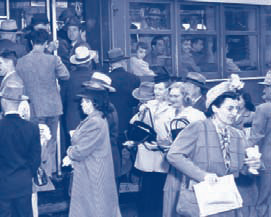 total employees remained relatively small compared to other modes, increasing from 6.2 percent to 10.7 percent. A survey of college-based programs at 31 universities around the nation found that, during the first year of program implementation, increases in student transit ridership ranged between 70 and 200 percent.
total employees remained relatively small compared to other modes, increasing from 6.2 percent to 10.7 percent. A survey of college-based programs at 31 universities around the nation found that, during the first year of program implementation, increases in student transit ridership ranged between 70 and 200 percent.
Table 1 shows a significant shift in mode choice from drive-alone to transit after the University of Washington in Seattle introduced the U-PASS program. The increase in transit patronage is, not surprisingly, higher among students than among faculty and staff. In response to ridership gains, Metro, the transit operator, added 60,000 annual hours of new bus service, the equivalent of ten more buses operating for approximately eighteen hours a day.
Several factors explain the increases observed in transit ridership, among them convenience. Deep-discount passes provide the same notable convenience as other forms of transit passes, including the ability to take a ride without having to worry about having exact change for the fare box.
Further, the ability to use the pass at any time probably encourages transit riding. In campus environments and at employment locations, the pass provides a convenient means of getting to local retail and service establishments. The convenience extends even to those who drive to work or school, for they do not have to move their cars to run personal or work-related errands midday. A fourth of Berkeley ECO Pass participants used the pass at midday, and some workers with staggered or flexible work schedules commuted in the off-peak hours. There was also a substantial proportion of travel both for work and other activities in the middle of the workday. Overall, nearly one in ten rides made with the ECO Pass occurred outside traditional work hours.
Relief for Acute Parking Shortage
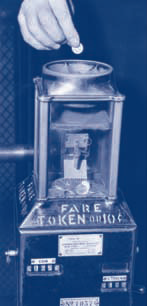 In areas where parking is in short supply, deep-discount group-pass programs may help alleviate demand for parking by inducing a mode shift away from driving alone. A survey of commuters to the Silicon Valley in Santa Clara County indicates that the ECO Pass program there resulted in a reduction in parking demand by approximately nineteen percent. With the introduction of the BruinGO Pass at UCLA, 1,000 drive-alone commuters living within the Santa Monica Municipal Bus Line service area gave up their parking spaces. These spaces did not remain vacant; the long waiting list for parking permits quickly refilled them.
In areas where parking is in short supply, deep-discount group-pass programs may help alleviate demand for parking by inducing a mode shift away from driving alone. A survey of commuters to the Silicon Valley in Santa Clara County indicates that the ECO Pass program there resulted in a reduction in parking demand by approximately nineteen percent. With the introduction of the BruinGO Pass at UCLA, 1,000 drive-alone commuters living within the Santa Monica Municipal Bus Line service area gave up their parking spaces. These spaces did not remain vacant; the long waiting list for parking permits quickly refilled them.
Reduced parking demand can also potentially reduce the number of new parking spaces needed. At the University of Washington, in Seattle, biennial telephone surveys of faculty, staff, and students about their travel behaviors and attitudes show that the U-PASS program there helped reduce demand for parking facilities. The 12,000 current campus parking spaces are fewer than existed in 1983, despite the addition of 8,000 more people to the campus community since then. The University was also able to avoid building 3,600 new parking spaces, thus saving $100 million in construction costs.
There may be little or no direct cost to employers or universities if participants pay the entire fare, as at UCB. There is some expense if they subsidize fares, as at the University of Washington, or pay them in full as at UCLA. However, universities and employers could still realize savings if they pay for transit passes instead of constructing new parking spaces. For example, Brown, Hess, and Shoup estimate the total monthly cost (construction, interest payments, and operation) of a single debt-financed parking space in a 1,500-space parking structure at UCLA to be $223 per month in 2002, similar to the $227 per month per space of a new parking structure at the University of Colorado, Boulder. At UCLA, the cost per parking space was four times the rate for parking permits. In comparison, UCLA spent approximately $71,000 a month for the BruinGO pass program, which induced 1,000 drive-alone commuters to give up their parking spaces. At $71 per parking space per month, the cost of the pass to the University was only a third of the cost per parking space. If new construction can be avoided, the institution stands to save a lot of money.
Reducing demand for parking spaces could also create opportunities to convert available or less-used spaces to daily, short-term visitor parking, which attracts higher parking rates. At UCLA in 2002, visitors paid $2 per hour and $7 per day to park on campus, while faculty, staff, and students paid approximately $54 for monthly permits. Assuming a month has twenty weekdays, a visitor parking space could generate as much as $140 per month if used 100 percent of the time. Even if only used half the time, it would generate $70 a month, or one-third again as much as a permit. In situations where short-term visitor parking is in short supply, as around UC Berkeley, a deep discount program that frees up parking spaces could help generate more parking revenue as well as increase parking convenience for visitors.
An Inexpensive Tax Benefit
Federal laws provide significant tax savings to both employers and employees for using public transit. Under existing law, employers can pay for deep-discount passes as benefits, or employees can pay through their places of work as pretax deductions. The combination of benefits and deductions can add up to $100 per month and take the form of a voucher, a commuter check, a pass, or other medium for the purchase of transit services. Many employers already take advantage of this law through various transit subsidy programs.
Because this benefit is a fully deductible business expense, employers pay less than the full face value of the pass. For example, assuming a thirty percent rate for taxes and other deductions, a $50 pass would cost an employer about $35 after tax deductions. When transit services are purchased with an employee’s pre-tax salary, employers save money from reduced payroll taxes, including employer-paid FICA, unemployment, workers compensation, disability, pension, and other obligations that can amount to approximately ten percent of salaries. For example, if an employee pays $50 a month for a deep-discount pass before taxes, the employee’s take-home pay is reduced by only approximately $35, saving $15 in taxes.
Summary
Studies of deep-discount group-pass programs consistently reveal either higher revenue per boarding than systemwide averages or higher total revenues from target markets with the program than without it. With discounts at forty to ninety percent of standard pass prices, it is a bargain for participants.
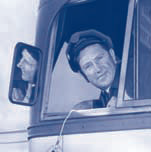 Besides being an instrument to improve financial efficiency in transit operations, the passes are a source of convenience to users. Other benefits of the programs include the shifts they trigger away from the auto-drive-alone mode, the reductions they induce in parking demand and thus parking-space needs, and their role as an inexpensive employee tax benefit. Employers and universities that institute group pass programs may attract potential employees or students with this benefit.
Besides being an instrument to improve financial efficiency in transit operations, the passes are a source of convenience to users. Other benefits of the programs include the shifts they trigger away from the auto-drive-alone mode, the reductions they induce in parking demand and thus parking-space needs, and their role as an inexpensive employee tax benefit. Employers and universities that institute group pass programs may attract potential employees or students with this benefit.
Under existing forms of subsidy, riders must pay to use the transit service even though they contribute to subsidies through taxes. With group-pass programs, cross-subsidization comes from potential riders in a group, all of whom have equal rights to access the services. The programs therefore offer contributors an opportunity to use the transit service without additional out-of-pocket cost. Even in an auto-dependent society, public transit can provide an alternative mode of travel that group-pass programs can make a little more convenient to use.
Further Readings
Jeffrey Brown, Daniel Baldwin Hess, and Donald Shoup, “Unlimited Access,” University of California, Los Angeles, Institute of Transportation Studies, School of Public Policy and Social Research, 1999.
Jeffrey Brown, Daniel Baldwin Hess, and Donald Shoup, “BruinGO: An Evaluation,” University of California, Los Angeles, Institute of Transportation Studies, School of Public Policy and Social Research, 2002.
Robert Cervero, “Transit Pricing Research: A Review and Synthesis,” Transportation, no. 17, 1990.
John Curtin, “Effects of Fares on Transit Riding,” Highway Research Record, no. 213, 1968.
James A. Meyer and Edward A. Beimborn, “An Evaluation of an Innovative Transit Pass Program: The UPASS,” Technology Sharing Report DOT-T-96-16, US Department of Transportation, 1996.
James H. Miller. Transportation on College and University Campuses: A Synthesis of Transit Practice (Washington, DC: National Academy Press, 2001).
Richard L. Oram. Implementation Experience with Deep Discount Fares (Washington, DC: FTA, US Department of Transportation, 1994).
Michael E. Williams and Kathleen L. Petrait, “U-PASS: A Model Transportation Management Program That Works,” Transportation Research Record 1404, TRB, National Research Council, Washington, DC, 1993.

